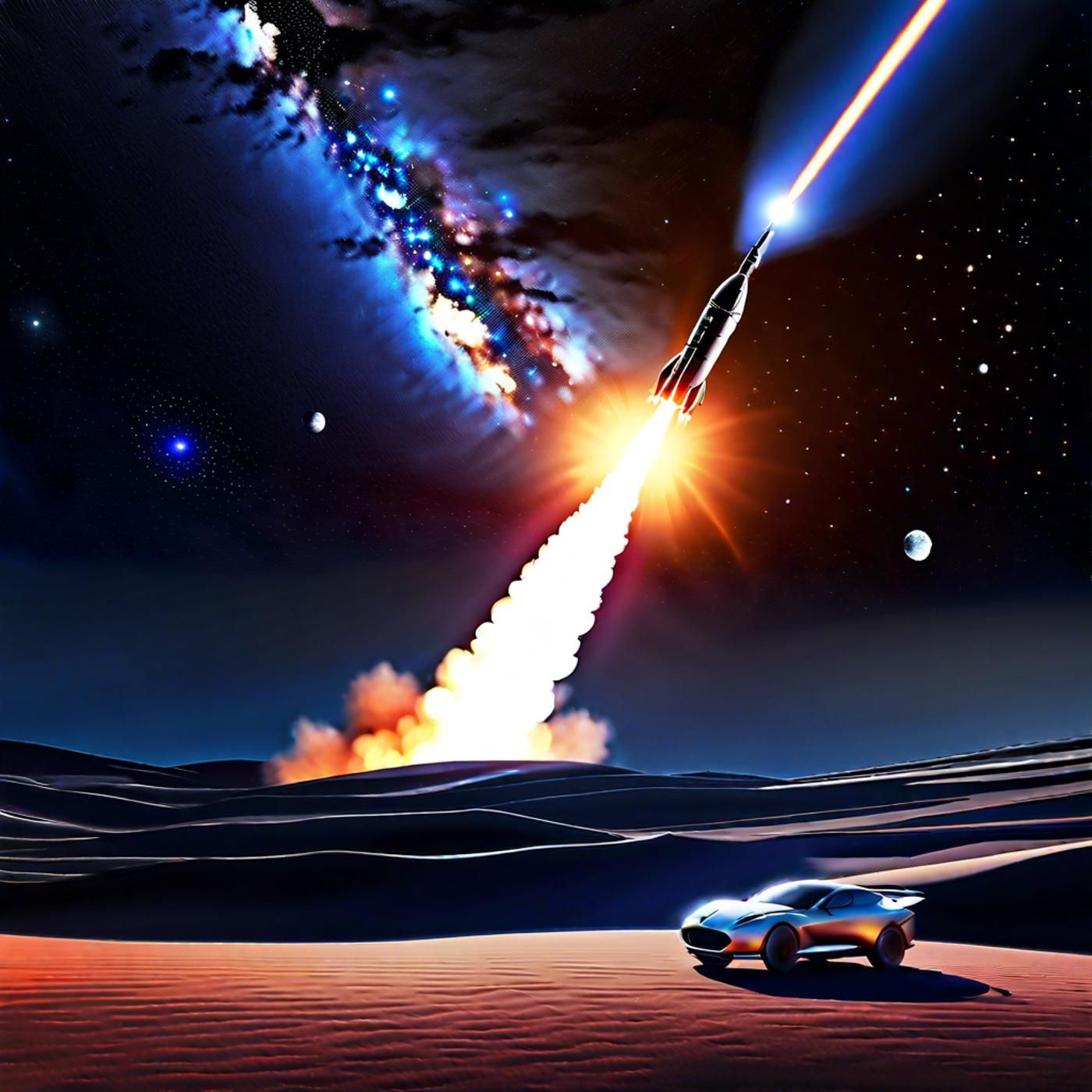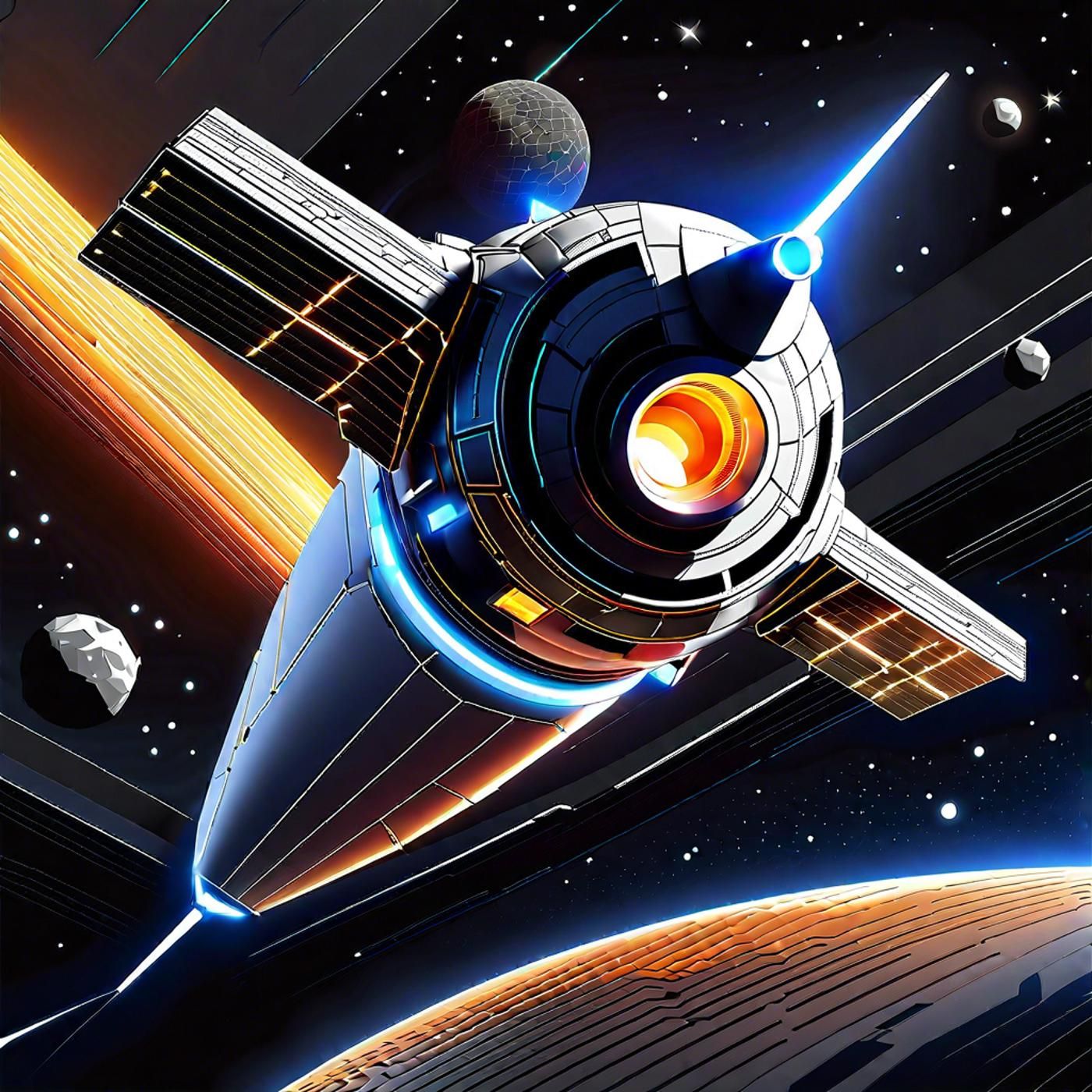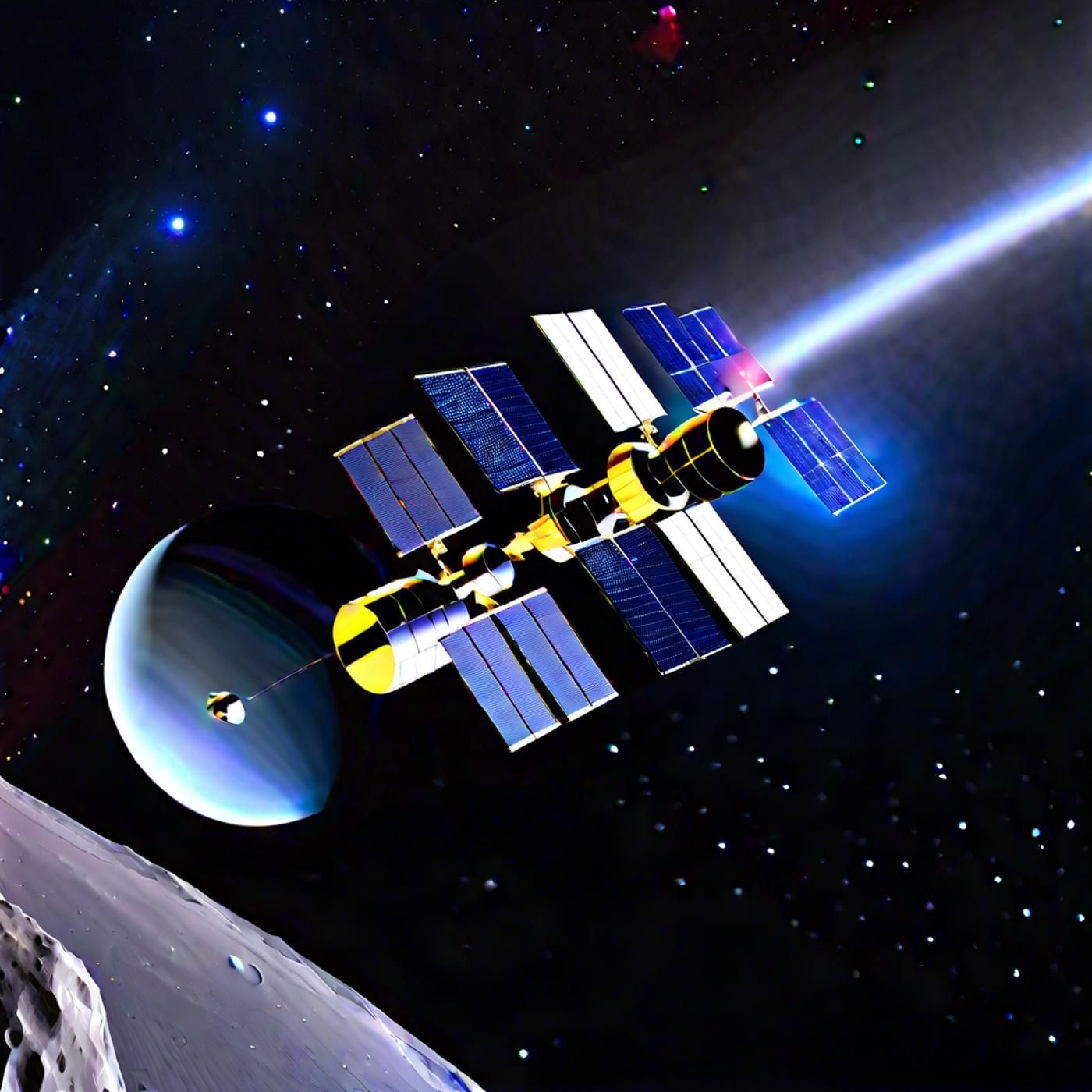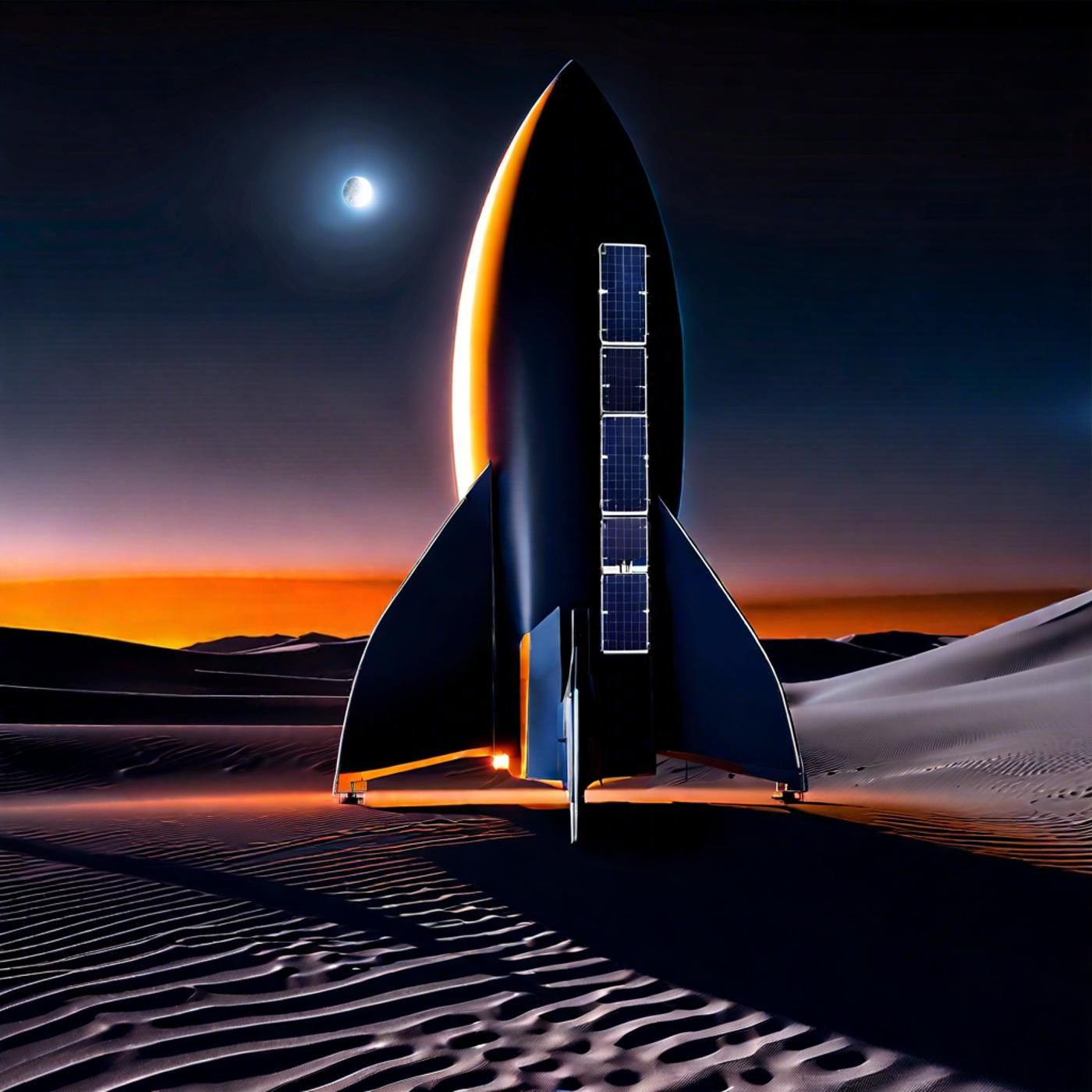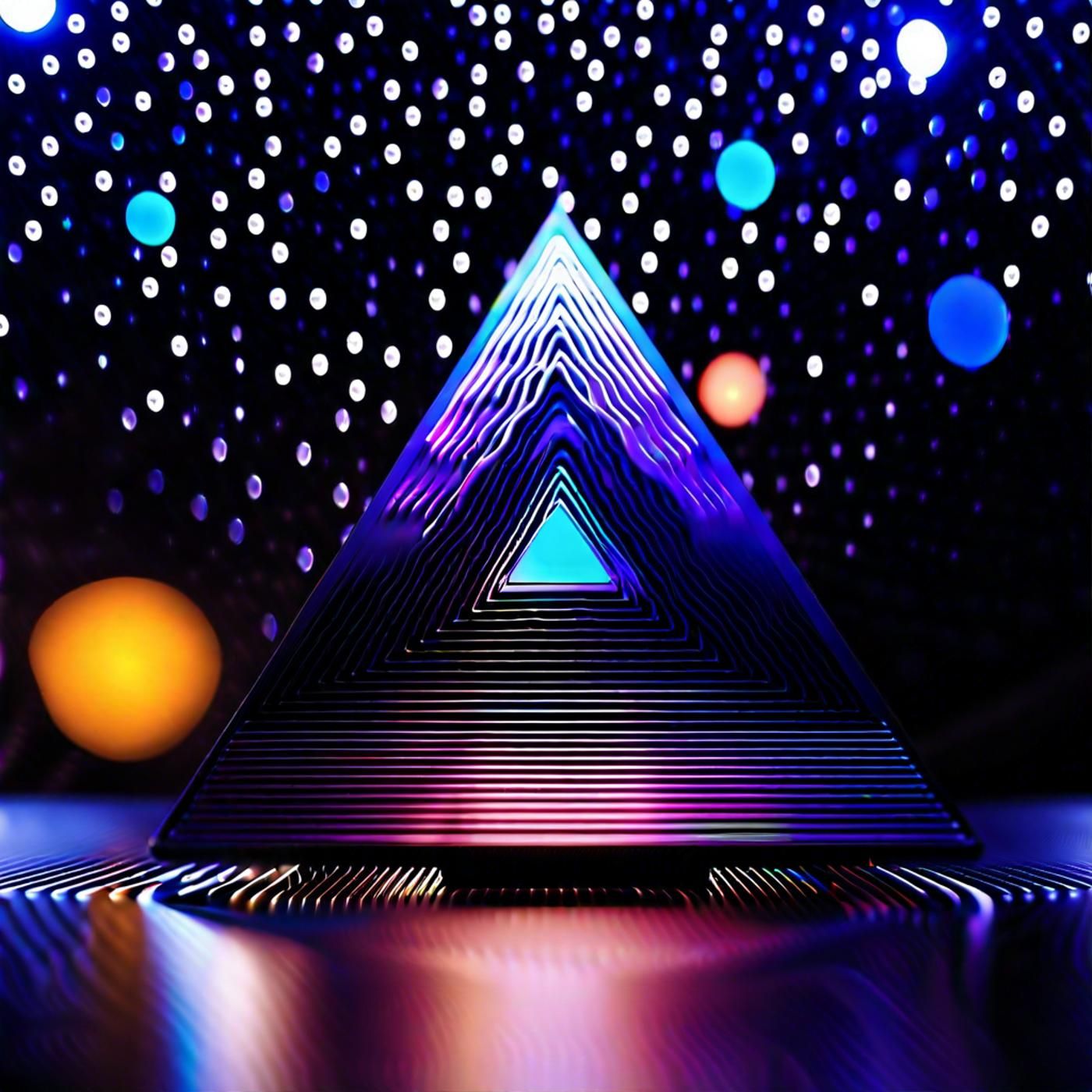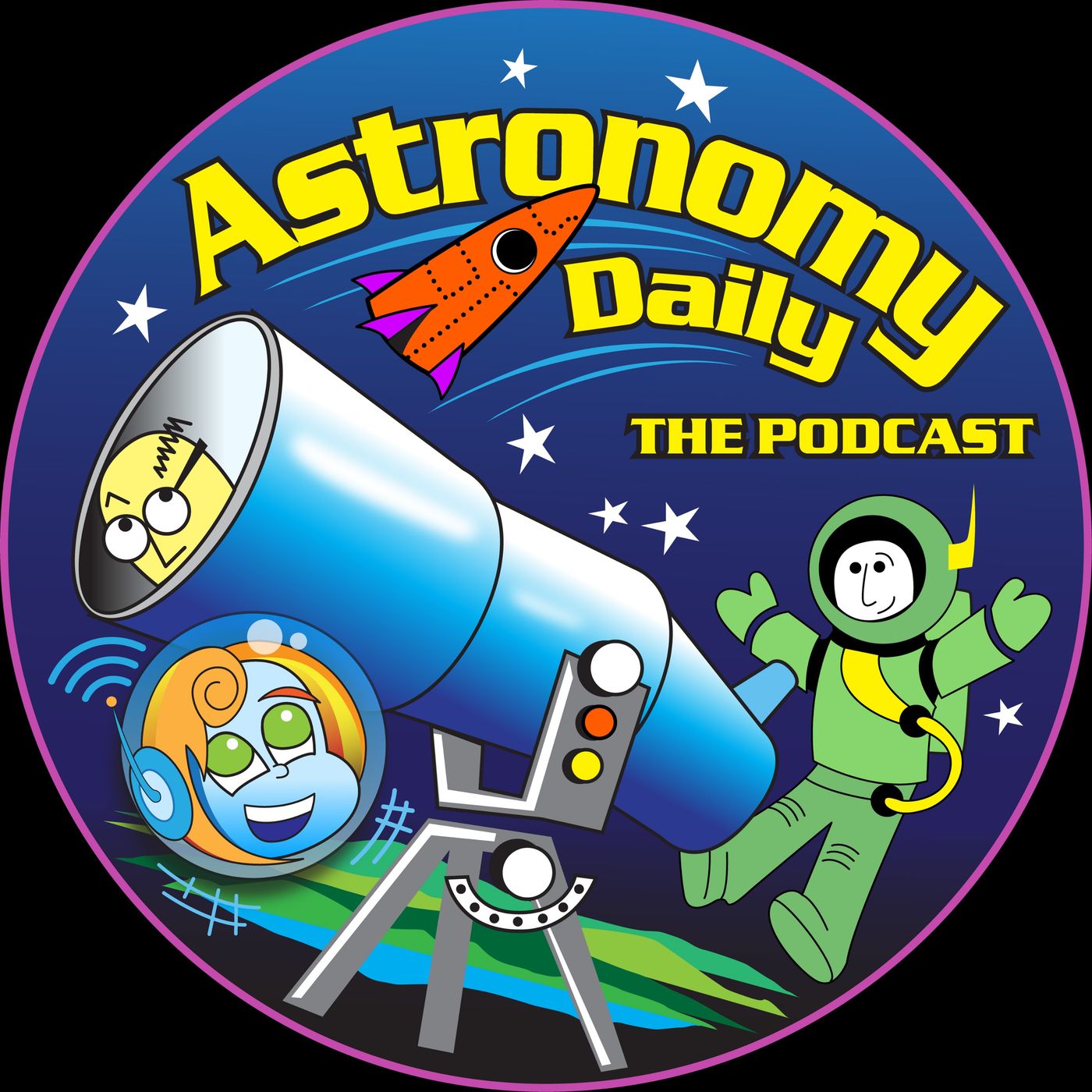S03E82: Boeing's Starliner Delay (Again) & Saturn's Seasonal Mysteries
Welcome to Astronomy Daily. I'm your host, Anna, and today we've got an exciting lineup of space news you won't want to miss. From the latest updates on Boeing's Starliner mission to groundbreaking discoveries about our galaxy's star clusters and...
Welcome to Astronomy Daily. I'm your host, Anna, and today we've got an exciting lineup of space news you won't want to miss. From the latest updates on Boeing's Starliner mission to groundbreaking discoveries about our galaxy's star clusters and intriguing insights into changes occurring within Earth's inner core. We've also got news on Virgin Galactic's new commercial astronaut crew, the completion of the Ariane 6 rocket's final rehearsal, and revelations from NASA's Cassini spacecraft about Saturn's seasonal heat and storms. So sit back, relax, and let's dive into the cosmos.
Chapters- Boeing's Starliner Mission Delay: The first astronaut mission of Boeing's Starliner capsule has been delayed until at least July 2. Originally set to undock from the International Space Station on June 26, the mission has been extended to allow NASA and Boeing more time to assess several issues that have emerged.
- Origins of Star Clusters: Astronomers from the University of Vienna have traced the origins of nearby star clusters to three primary star-forming regions in our Milky Way galaxy. These regions have been sites of massive star formation and subsequent supernova explosions.
- Earth's Inner Core Slowing Down: Since around 2010, researchers from the University of Southern California have discovered that Earth's inner core has been slowing down. This phenomenon, which alters the length of our days by fractions of a second, offers intriguing insights into the planet's internal dynamics.
- Virgin Galactic's New Commercial Astronaut Crew: Virgin Galactic has revealed a new commercial astronaut crew for its next-generation delta class planes, which are slated to commence flights in 2026. This pioneering crew features three notable members: past Virgin Galactic astronaut Kelly Girardi, Canadian Shawna Pandya, and Ireland's Nora Patton.
- Ariane 6 Rocket's Final Rehearsal: The first Ariane 6 rocket has successfully completed its final wet dress rehearsal, marking an important milestone before its first skyward journey. This crucial test took place at Europe's spaceport in French Guiana.
- NASA's Cassini Spacecraft Findings: NASA's Cassini spacecraft has provided us with groundbreaking data that reveals Saturn emits heat in varying amounts depending on its seasons. This fascinating discovery outlines that Saturn fluctuates in the amount of heat it radiates into space.
For an astronomical experience, visit our website at astronomydaily.io for the latest news, sign up for our free newsletter, and check out exclusive sponsor deals. Connect with us on YouTube, TikTok, X, and Facebook via @AstroDailyPod for engaging discussions with fellow space aficionados. This is Anna, reminding you to keep your gaze fixed on the heavens. Until our next stellar episode, let the cosmos ignite your curiosity and wonder. Clear skies and cosmic discoveries to all!
Support:This podcast is better with your support:
https://www.bitesz.com/show/astronomy-daily-the-podcast/support/
www.bitesz.com
Sponsors:
www.bitesz.com/nordpass
https://www.bitesz.com/show/astronomy-daily-the-podcast/sponsors/
Transcript
Welcome to Astronomy Daily! I'm your host, Anna, and today we've got an exciting lineup of space news you won't want to miss. From the latest updates on Boeing's Starliner mission to groundbreaking discoveries about our galaxy's star clusters, and intriguing insights into changes occurring within Earth's inner core. We've also got news on Virgin Galactic's new commercial astronaut crew, the completion of the Ariane 6 rocket’s final rehearsal, and revelations from NASA's Cassini spacecraft about Saturn's seasonal heat and storms. So sit back, relax, and let's dive into the cosmos!
The first astronaut mission of Boeing's Starliner capsule has been delayed until at least July 2. Originally set to undock from the International Space Station on June 26, the mission has been extended to allow NASA and Boeing more time to assess several issues that have emerged. One of the key concerns is the small helium system leaks and the performance of the thrusters that were observed during the rendezvous and docking phase. NASA's Commercial Crew Program Manager, Steve Stich, emphasized the importance of following the standard mission management team process and letting the data drive their decision-making. This careful approach aims to ensure the highest safety standards for the astronauts on board. The current Crew Flight Test, or CFT, includes NASA astronauts Butch Wilmore and Suni Williams, who have been on the ISS since the capsule’s arrival on June 6.
During the initial phase of the mission, Starliner experienced problems with five out of its 28 reaction control system thrusters, four of which were eventually restored. Additional issues have been observed with helium leaks in the propulsion system. One such leak was identified before the launch and deemed non-critical, while four more appeared post-launch. Despite these problems, NASA remains confident in Starliner's capabilities. "Starliner is performing well in orbit while docked to the space station," Stich said. NASA intends to use this additional time to prepare for upcoming spacewalks and to clear a path for critical station activities, all while ensuring the readiness of the Starliner for its return journey. The agency aims to gain valuable insights into system upgrades required for post-certification missions.
Astronomers from the University of Vienna have traced the origins of nearby star clusters to three primary star-forming regions in our Milky Way galaxy. These regions have been sites of massive star formation and subsequent supernova explosions. The study, led by Cameren Swiggum and João Alves, reveals that these supernovae shaped various gas structures in our galaxy, including the Local Bubble around our solar system. Using precise data from the Gaia mission, the researchers identified that most nearby young star clusters belong to three families stemming from these star-forming regions. This discovery offers valuable insights into our Milky Way’s structure and evolutionary history. Interestingly, over 200 supernova explosions within these star cluster families have significantly impacted the gas distribution in our local region of the Milky Way. The detailed analysis of these star clusters allows us to understand the genealogy of star families in our galactic neighborhood, much like tracing a family tree. It’s fascinating to consider that our solar system resides in a bubble, influenced by distant yet connected stellar events. This research not only enhances our knowledge of the Milky Way but also brings us closer to understanding our own galactic ancestry.
Since around 2010, researchers from the University of Southern California have discovered that Earth's inner core has been slowing down. This phenomenon, which alters the length of our days by fractions of a second, offers intriguing insights into the planet's internal dynamics. Seismic data from earthquakes and nuclear tests revealed that the inner core's reduced speed is influenced by convection within the liquid iron outer core and the pull of gravitational forces in the mantle above. Although this slowdown has minimal practical impact on our daily lives, it provides a deeper understanding of the complex interactions taking place beneath our feet. Researchers measured changes in seismic wave travel times to reach this conclusion, confirming that the inner core’s behavior is more nuanced than previously believed. This development underscores the importance of continued study and monitoring of Earth's inner mechanisms for broader geological and scientific knowledge.
Virgin Galactic has revealed a new commercial astronaut crew for its next-generation Delta-class planes, which are slated to commence flights in 2026. This pioneering crew features three notable members: past Virgin Galactic astronaut Kellie Gerardi, Canadian Shawna Pandya, and Ireland's Norah Patten. The trio will undertake research endeavors focused on human health in space, building on previous experiments conducted by Gerardi during her flight on Galactic 05 in November 2023. This team is part of the International Institute for Astronautical Sciences, a non-profit organization dedicated to testing technologies in suborbital aircraft and performing educational activities. Gerardi expressed her honor in leading the next research mission for IIAS, emphasizing the opportunity to enhance the scientific knowledge gained from her prior spaceflight. Pandya, recognized as the first named Canadian female commercial astronaut, and Patten, expected to be Ireland's first private astronaut, bring distinctive backgrounds and expertise to the mission.
With these developments, Virgin Galactic continues to emphasize its commitment to advancing both space tourism and scientific research. The Delta vehicles are anticipated to allow for more frequent flights, paving the way for wider access to space and deeper exploration of its scientific frontiers.
The first Ariane 6 rocket has successfully completed its final wet dress rehearsal, marking an important milestone before its first skyward journey. This crucial test took place at Europe’s Spaceport in French Guiana, simulating every stage of the launch sequence up until the final moments before ignition and liftoff. During the rehearsal, 180 tonnes of propellant were loaded into the rocket, practices were executed to cool the components from the warm tropical temperatures down to the frigid conditions required for the cryogenic fuels. Engineers meticulously filled the rocket's tanks with liquid oxygen and liquid hydrogen while monitoring and managing all related procedures. This detailed rehearsal allowed the ground teams to fine-tune their operations and ensure that every aspect of the launch operation was executed flawlessly. Guy Pilchen, Ariane 6 launcher project manager at ESA, emphasized the significance of this step, stating that using the actual flight hardware and software allowed teams to refine the complex processes required for a successful liftoff. With the completion of this rehearsal, data are now being analyzed, and the results will soon confirm the launch date. This advancement means that Europe is on the cusp of achieving independent access to space, with Ariane 6 poised to serve a broad array of missions, from commercial satellites to scientific explorations.
Overall, the wet dress rehearsal’s success is a testament to the hard work and dedication of the teams involved, bringing us closer to witnessing the Ariane 6 rocket take to the skies for the very first time.
NASA's Cassini spacecraft has provided us with groundbreaking data that reveals Saturn emits heat in varying amounts depending on its seasons. This fascinating discovery outlines that Saturn, much like a lightbulb adjusting its brightness, fluctuates in the amount of heat it radiates into space. This seasonal variation causes significant turbulence in Saturn's atmosphere, whipping up storms strong enough to encircle the entire planet. These findings challenge the long-standing assumption that gas giants, like Saturn, emit heat evenly in all directions and at a constant rate. Researchers have identified that these alterations are due to the shifting amounts of sunlight absorbed by Saturn as it moves through its elongated, 30-year orbit around the Sun. With such changes, the resulting energy imbalance impacts our understanding of planetary climates and evolution. Such insights call for a reevaluation of current models and theories used to describe planetary behavior. This knowledge not only provides a deeper understanding of Saturn but also prompts us to reconsider how we study and interpret atmospheric dynamics across our solar system and beyond.
Thanks for tuning in to Astronomy Daily. We hope you enjoyed today's episode and found our journey through the cosmos as fascinating as we did. For more news, updates, and detailed articles on the latest discoveries, be sure to visit our website at astronomydaily.io. Until next time, keep looking up and stay curious. This is Anna, signing off.
New to Astronomy Daily - The Podcast?
Here are some great episodes to start with.














